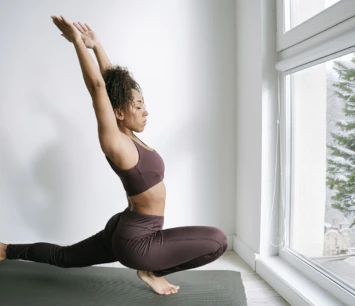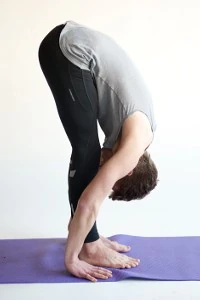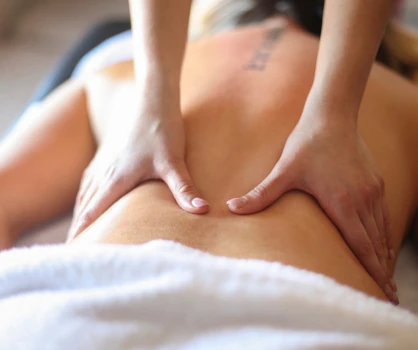Four Holistic Health Treatments to Melt Away the Winter Blues
Tuesday, November 07, 2023, 01:50 PM
This blog was originally published on December 1, 2016. It has been revised to include new information and links.
The winter is a tough time for many Canadians. As temperatures drop and the days get shorter, it's no wonder many Canadians suffer from the winter blues or even the clinical condition called Seasonal Affective Disorder (SAD).
SAD and winter blues are related, but the main difference is the severity and duration of symptoms.
The Canadian Mental Health Association (CMHA) estimates that people affected with SAD (2 to 3% of Canadians) experience serious depressive symptoms associated with the season, while 15% of Canadians experience winter blues, which is mild and temporary sadness or unhappiness related to the dark, cold weather.
The winter season can drain your energy and cause grumpiness and sluggishness. Holistic health care can help address these feelings and keep your mood and motivation steady throughout the tough winter months.
Try the following four tips to get out of that dreaded winter gloom:
1. Get Moving with Yoga
Yoga represents the fusion of the mind, body, and spirit through controlled actions.
Yoga is a form of meditation that allows you to relax, combat stress, and handle anxiety in a unique way. The controlled actions can calm the mind and nervous system through stretches, breathing, and meditation techniques.

A 2023 study found that yoga can be an ideal complementary therapy for those with depressive symptoms and can even help to maintain neurotransmitters in the brain, increasing serotonin and dopamine activity, which can positively impact stress levels.
To get started with yoga at home, try out a standing forward fold, known to reduce fatigue and promote blood flow:

- Ground down through the four corners of your feet.
- Exhale as you bend forward at the hips, lengthening the front of your torso.
- If comfortable, with your knees straight, bring your palms or fingertips to the floor slightly in front of or beside your feet, or to the backs of your ankles.
- If this isn't possible, cross your forearms and hold your elbows.
2. Free Your Mind with Reiki
Reiki is an excellent way to use your body's natural ability to heal itself and obtain optimal health. This practice originated over 4,000 years ago and remains popular to this day!
It is a Japanese energy technique with Tibetan origins, where the practitioner gently places their hands in specific positions on the head and body with the intention of healing on a physical, mental, and emotional level.
A recent study found that Reiki was effective in reducing stress levels and improving quality of life of individuals from an outpatient clinic, and it was even more effective when paired with massage therapy.
Watch our Reiki video to learn more about the benefits of this practice and to see a demonstration.
3. Take a Day at the Spa
Take a spa day and explore many different types of therapies for fatigue and stress!
Spa/body wraps are an amazing holistic health treatment made up of gentle mixtures of clays, muds, salts, and essential oils. This practice can have a pronounced effect, from cleansing, detoxifying, stimulating, and most importantly, relaxing.
You can also try aromatherapy, which uses aromatics extracted from plant sources by distillation, pressing and purifying, or diffusion. The oils are usually inhaled or put directly onto the skin in a diluted form.
Lavender oil has been known to calm anxiety by impacting the part of the brain that controls emotions and restoring a neutral state in the nervous system. Add a few drops to a hot bath or diffuser.
Results from a 2022 study (published in Evidence-Based Complementary and Alternative Medicine) suggest that aromatherapy relieves fatigue in adults who suffer from chronic diseases.
4. Release the Tension with Massage Therapy
A massage is an exceptional way to shut out the outside world, relax, and release your tension. Many studies have proven massage to reduce stress levels.
Through manipulation of the soft tissues in the body, you can achieve balance and health. Massage therapy can address chronic muscular issues, circulatory concerns, and lymphatic systems.

Keep in mind different massage techniques meet different goals, so a trigger point, deep tissue, or Swedish massage can each have distinct results.
Winter blues and Seasonal Affective Disorder are real experiences that many people face when the days grow shorter and the weather turns cold.
If you are struggling with the winter blues, there are many strategies you can employ to improve your mood and well-being during this challenging season.
If you suspect you may have SAD, consult a health care professional for evaluation and tailored treatment options.
We encourage you to read our Holistic Health Guide to learn more about these holistic health practices or visit our Member Directory to schedule a treatment session with a practitioner near you.
Remember to prioritize self-care and find moments of joy and warmth even in the depths of winter.

